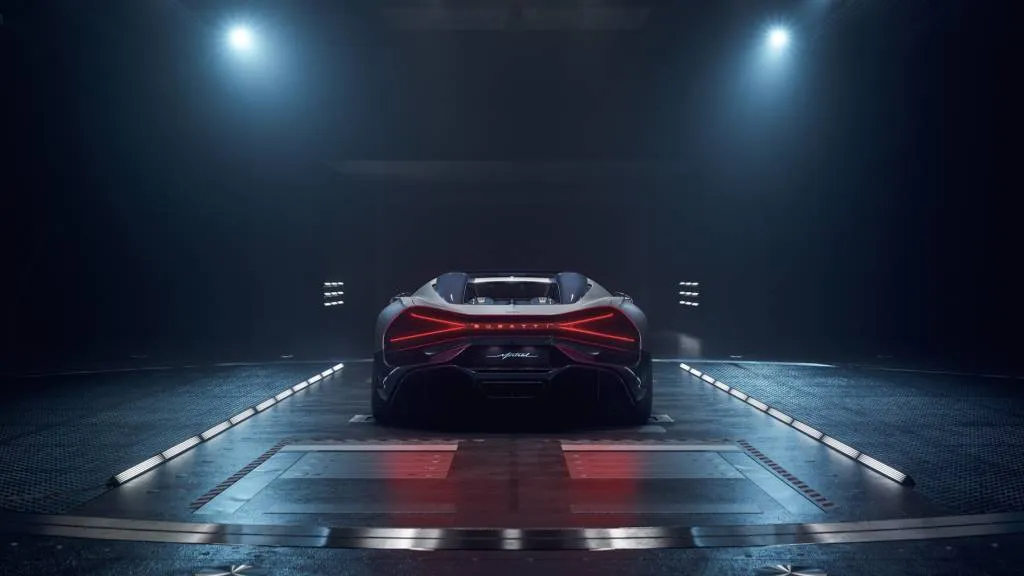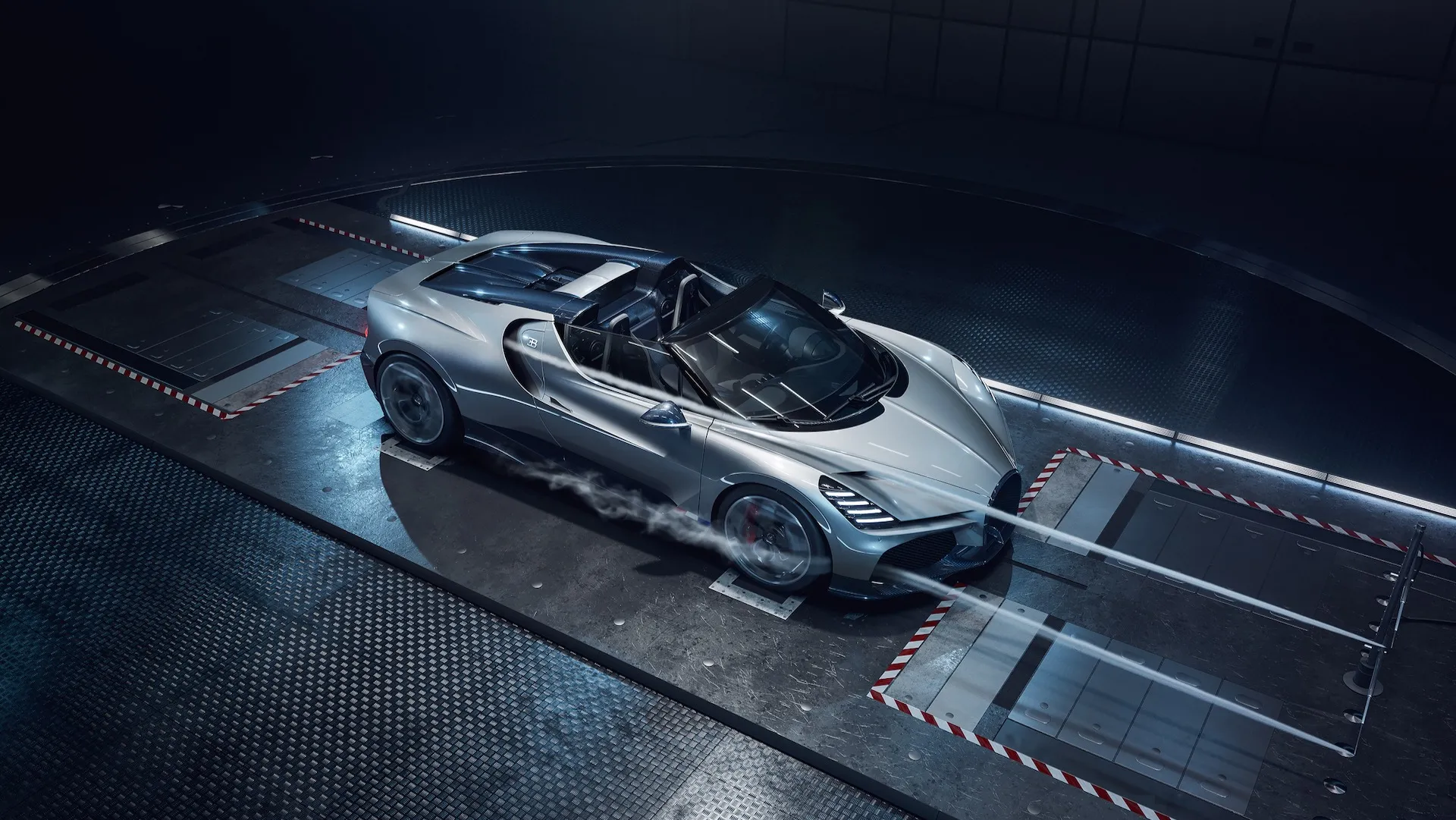The Bugatti Mistral is the Chiron roadster the automaker didn’t plan to make. As explained by Bugatti, removing the roof required a rethink of the standard Chiron’s aerodynamic features.
The goal was to a design a roadster that could achieve a top speed of over 261 mph without compromising interior comfort or cooling for the familiar quad-turbocharged 8.0-liter W-16 engine, which carries over from the Chiron coupe. The Mistral closes the chapter the mega engine which debuted in 2005 in the Veyron and has powered every Bugatti since.
One of the new features engineers came up with is a spoiler mounted at the top of the windshield. It channels airflow away from the driver and passenger in the two-seat cockpit, while aiming it at the rear wing to maximize downforce. A rear diffuser with a ramp-like design also helps generate downforce, as well as in the removal of hot air from radiators.
The Bugatti horseshoe grille was also widened to feed more air into the radiator behind it. The Mistral also features air ducts with 3D-printed mesh to help direct cooling airflow, along with side inlets that feed cooling air to additional radiators for the engine oil, transmission, and rear axle components. The hot air exiting these radiators is drawn out through vents in the taillights by negative pressure “just as smoke is sucked up through a chimney,” according to Bugatti.

Bugatti Mistral wind tunnel testing
The roof-less design allowed for air scoops located right behind the seats, giving the driver and front passenger a more intense soundtrack than in the closed-roof Chiron. The scoops also form part of the car’s crash structure.
Scheduled to start deliveries later this year, the Mistral is priced at approximately $5 million. The entire 99-unit production run is already sold out. While the Mistral will be the last Bugatti road car powered by the W-16 engine, its production run will overlap with the Bolide track car.
Bugatti also plans to show the Chiron’s successor this year. The car will introduce a new hybrid powertrain, and is due to enter production only in 2026.
